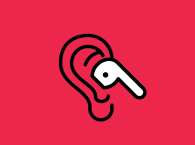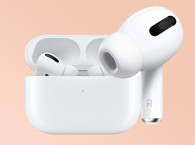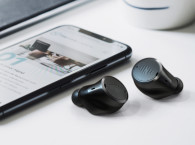
The new report, "Future Hearables: Strategies, Opportunities & Forecasts 2018-2023," found that more than 271 million audio-focused multimedia hearables from the likes of Apple, Bose, Google, Samsung and Sennheiser will be in use by 2022, compared to an estimated 62 million in 2018. These will represent over 50% of all wireless headphones in use by 2022; reaching as high as 80% in the US. Apple’s AirPods have emerged as a clear leader, with Juniper estimating around 24 million AirPods to be shipped in 2018.
The research predicts that as mid-range and budget manufacturers leverage voice assistants to enhance their devices, over 75% of hearables in use will incorporate voice assistants by 2022. Research author James Moar added: “In some cases, voice assistants will be the only ‘hearable’ feature of these devices. Premium players need to provide other features to distinguish themselves, like advanced audio adjustments or innovative interfaces.”
The fitness segment has strong differentiation here, with custom assistants providing in-the-moment workout feedback, but these are only expected to make up 10% of hearables in use in 2022, thanks to their niche use case. Assistive hearables will win on revenues; generating over $40 billion annually by 2022, as hearing aids integrate mobile technologies and maintain medical industry prices.
Consumer assistive hearables are less expensive, which is proving appealing to healthcare institutions. Nuheara is one of the most successful companies, already distributing IQbuds BOOST through the United Kingdom NHS from 2019. However, Juniper expects existing hearing aid players to maintain control of most medical distribution channels for the foreseeable future.

Hearables Market Development
Hearable technology is now influencing audio product development, with devices featuring the hallmarks of hearable technology appearing at all price points. With more smartphones no longer having the 3.5mm headphone jack, these will become more prominent. From that, the addition of voice assistants is a simple step. Therefore basic hearables will start to appear, although the inclusion of sensors into the products will remain the preserve of the premium product bracket for the foreseeable future.
The Juniper research splits the hearables market into the following segments:
- Multimedia – ear-based wearables that supply and augment music and other audio content as their primary function and market positioning.
- Fitness – ear-based wearables that track a range of biometrics as their primary function and market positioning, in addition to providing audio playback for users. These devices also typically provide multimedia playback and may also offer an audio coaching facility.
- Assistive – ear-based wearables that have the primary purpose of providing hearing support. This can be either prescribed or OTC (over the counter) in nature.
- Others – hearables which do not fall into the preceding categories. These include, but are not limited to, advanced Bluetooth headsets and app-enabled in-ear thermometers.

For more insights into how hearable technology will affect music hardware, Juniper offers a free whitepaper download summary, How Hearables Will Revolutionise the Personal Audio Market.
www.juniperresearch.com






